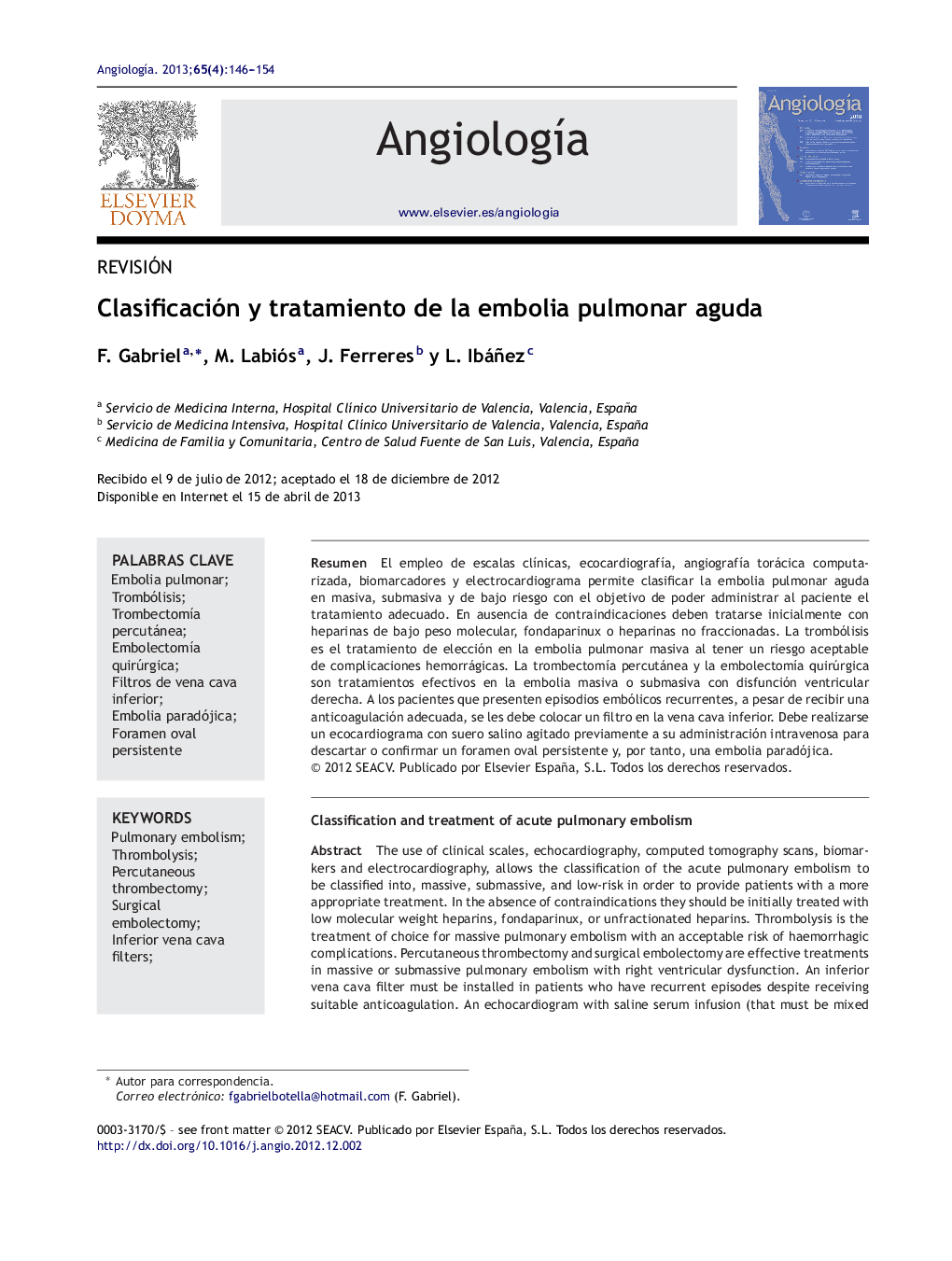| Article ID | Journal | Published Year | Pages | File Type |
|---|---|---|---|---|
| 2867521 | Angiología | 2013 | 9 Pages |
Abstract
The use of clinical scales, echocardiography, computed tomography scans, biomarkers and electrocardiography, allows the classification of the acute pulmonary embolism to be classified into, massive, submassive, and low-risk in order to provide patients with a more appropriate treatment. In the absence of contraindications they should be initially treated with low molecular weight heparins, fondaparinux, or unfractionated heparins. Thrombolysis is the treatment of choice for massive pulmonary embolism with an acceptable risk of haemorrhagic complications. Percutaneous thrombectomy and surgical embolectomy are effective treatments in massive or submassive pulmonary embolism with right ventricular dysfunction. An inferior vena cava filter must be installed in patients who have recurrent episodes despite receiving suitable anticoagulation. An echocardiogram with saline serum infusion (that must be mixed prior to the intravenous administration), rules out or confirms the presence of a patent foramen ovale and therefore, a paradoxical embolism.
Keywords
Related Topics
Health Sciences
Medicine and Dentistry
Cardiology and Cardiovascular Medicine
Authors
F. Gabriel, M. Labiós, J. Ferreres, L. Ibáñez,
